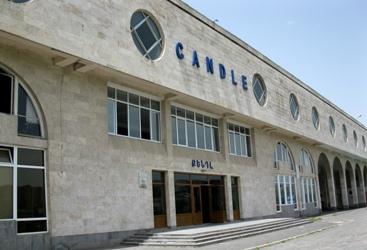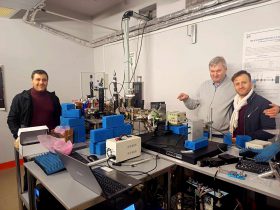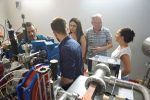October 31, 2019
In the framework of the new research project “Molecular and Cellular Effects of Ultrashort Pulsed Radiation”, supported by the Russian Science Foundation, an international team of scientists headed by Prof. Andreyan Osipov (Russia) and Prof. Rouben Aroutiounian (Armenia) published the first experimental results obtained on AREAL facility in the October issue of International Journal of Molecular Sciences (N. Babayan, et al., “Laser-Driven Ultrashort Pulsed Electron Beam Radiation at Doses of 0.5 and 1.0 Gy Induces Apoptosis in Human Fibroblasts”, Int. J. Mol. Sci., 2019, 20, 5140).
During the last decade, the technology of laser-driven sub-picosecond ultrashort pulsed electron beam accelerators has developed opening new highlights for the biological and medical applications. This type of laser-driven accelerators provide a unique opportunity to investigate the effects of ultrashort pulsed electron beam irradiation with the energy in MeV domain at different dose rates, providing sufficient beam stability, reproducibility, and reliability for radiobiological experiments.
The possibility of creating directed ultra-short pulses of an enormous dose rate may allow a precise dose control induction of local effects in tissues. Considering the sub-picosecond duration of the electron beam and comparing it to the time scale of radiobiological effects in cells, it may be possible that (due to shortness of pulses) new radiation effects will arise, ultimately resulting in a change in the radiobiological effectiveness. However, an analysis of the basic mechanisms of laser-driven ultrashort pulsed electron beam radiation damage on living cells is still required to enhance their application in medicine.
The aim of the current study was to investigate the radiobiological effects of sub-picosecond pulsed electron beam irradiation in vitro, compared to X-ray irradiation. The new experimental data suggest that ultrashort pulsed electron beam radiation produces more complex DNA damage than X-ray radiation, leading to cell death rather than to cytogenetic disturbance.
It is worth mentioning that a large-scale reference to the research was also given by Russian well-known newspapers газета.ru and Indicator.












